History
During the Klondike gold rush of 1898, prospectors travelling to the Klondike needed to avoid the extremely treacherous Miles Canyon and the Whitehorse Rapids. For less than three years, Canyon City was a tent city and trans-shipment centre, just upriver from Whitehorse, Yukon Territory. Norman Macaulay built and operated the five kilometre Canyon and White Horse Rapids Tramway Co. from a landing at Canyon City until the White Pass & Yukon Railway was completed in 1900, eliminating the need for the tramway.
Recording Photography
In a park that now encompasses the site of Canyon City, a pair of horse-drawn tramway cars has been reproduced. Because I’d like to build a pair myself to help haul in firewood from my forest, I took enough photographs to get the concepts.
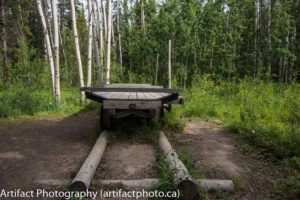
The front-on view shows that it’s a flatcar with a slightly curved floor to assist with keeping the load aboard. A wooden lever is used to activate the brake from a standing position atop the car. The rails are felled trees of a certain diameter, and the wheels have flanges on both sides to hold onto the trees.
This would not have been a fast moving ride, but the entire tramway was built in just over two weeks and probably turned a profit very quickly.
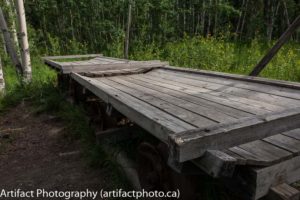
I took a close-up view of the deck for details of the bracing.
Next I took a series of shots demonstrating the braking system. I took closeups, and then covered each side to show the travel of the brake mechanism bars.
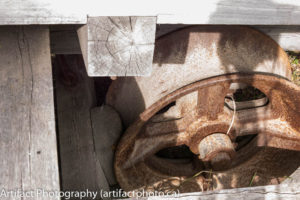
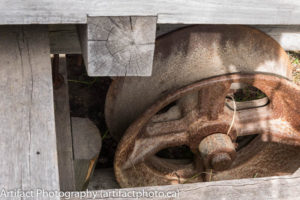

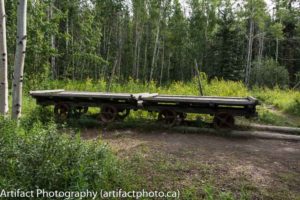


So, from these photographs, I believe I have enough information to begin drafting plans for one of these. I took a shot with my grey card on it to give me white balance and scale. I would normally have lit the right side with off-camera flash, but I don’t normally hike with those.
This blog is published every Monday at 9:00 am, Eastern Standard Time. If you have comments, questions, or can think of a better approach, feel free to leave a comment. I’ll try to get back to you with a pithy answer.
Feel free to explore the rest of the Artifact Photography (a division of 1350286 Ontario Inc.) website at www.artifactphoto.ca
